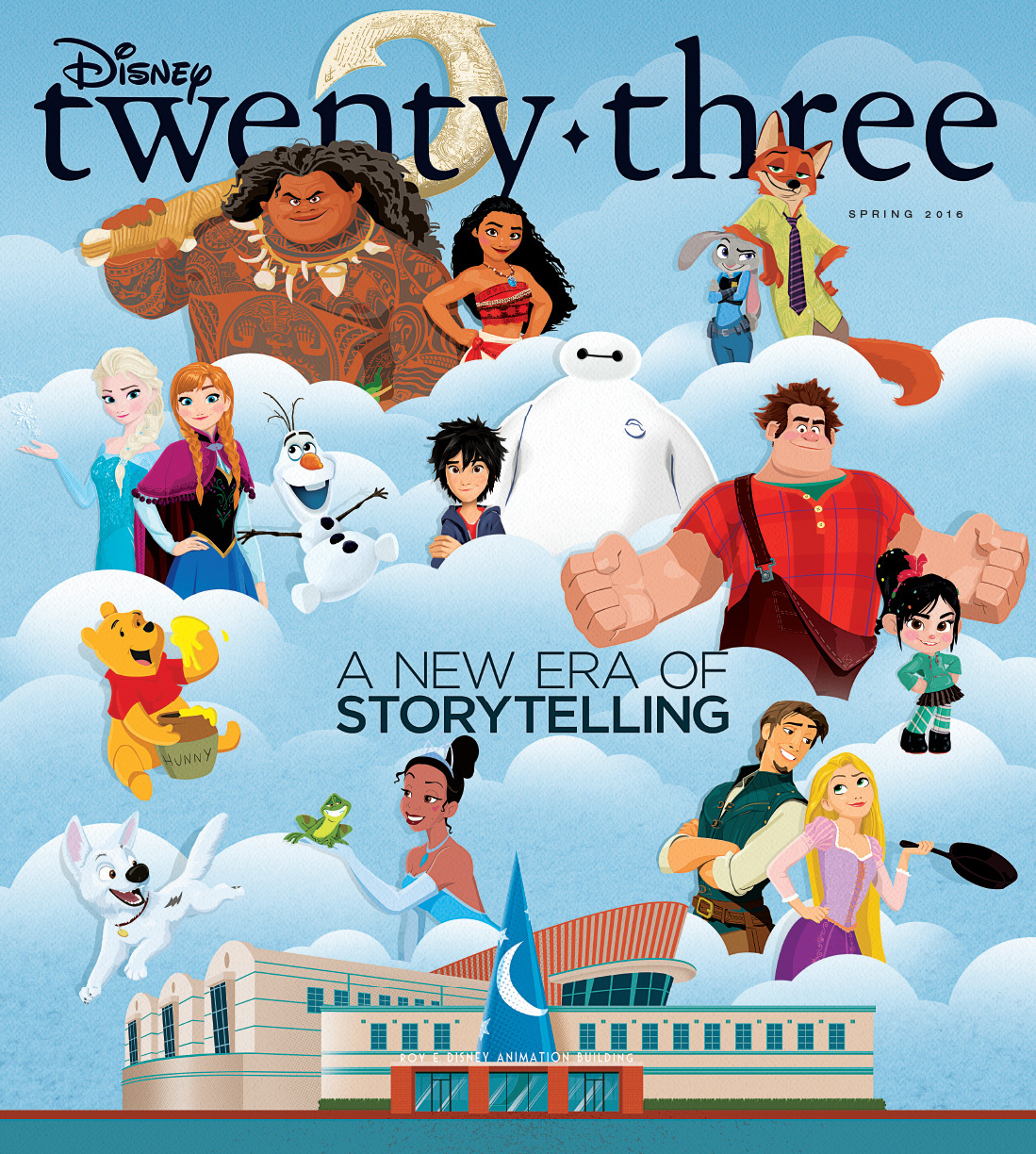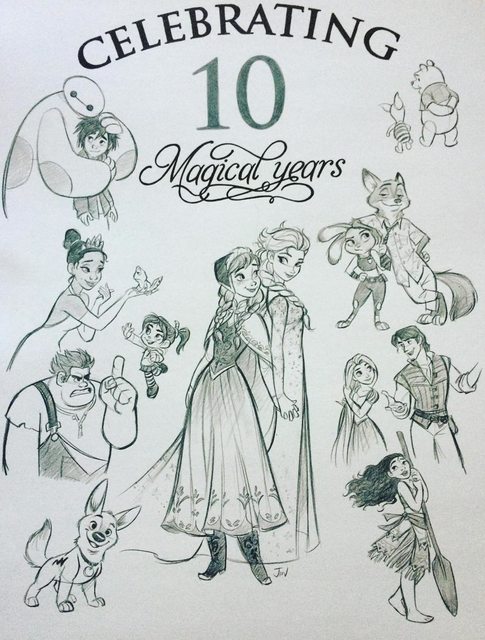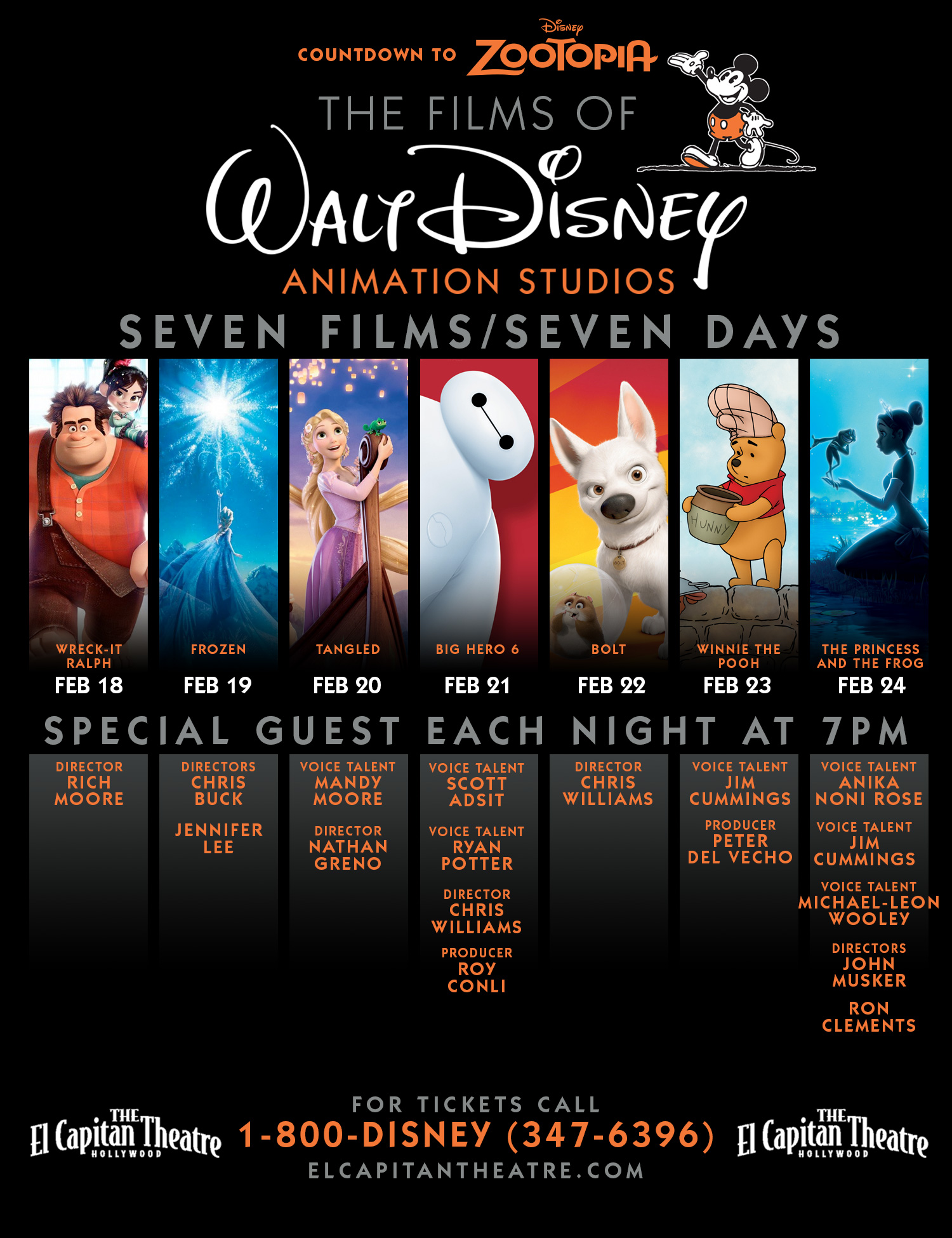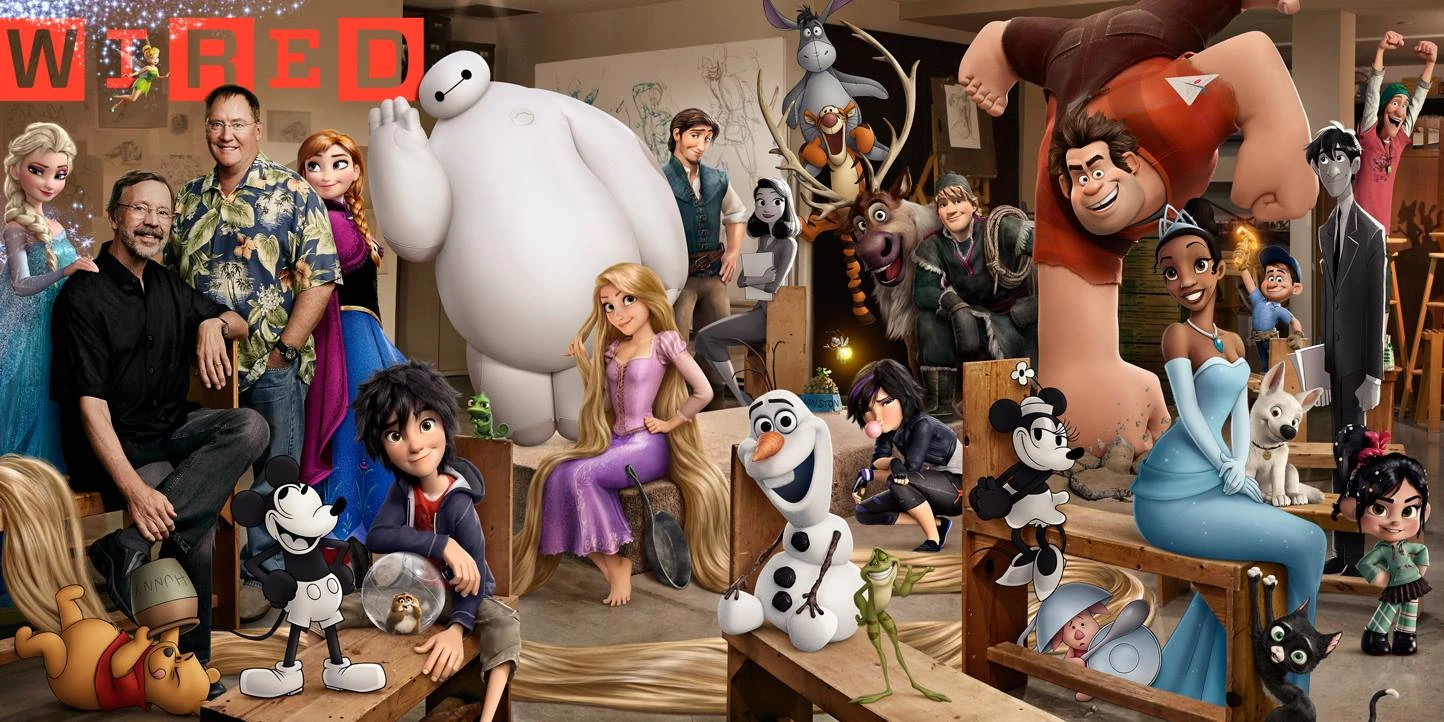Disney always gives the Little Mermaid credit for getting Disney's groove back after Walt’s death. However, I can think of at least two movies that predate Little Mermaid that might have been forerunners of what was to come as well. This two films being Who Framed Roger Rabbit and The Great Mouse Detective. If any others come to mind let me know but for now those are the two I feel should get some credit for getting the e Disney renaissance into gear
You are using an out of date browser. It may not display this or other websites correctly.
You should upgrade or use an alternative browser.
You should upgrade or use an alternative browser.
Film ► What Film Really Started the Disney Renaissance?
- Thread starter Sonofjafar
- Start date
|
REGISTER TO REMOVE ADS |
|
- Joined
- Jun 5, 2016
- Messages
- 462
- Awards
- 36
Roger Rabbit isn't part of the Disney Animated Canon so it can't be part of the Disney Renaissance at all since that's one of the eras of the Animated Canon.
Great Mouse Detective was successful in that it was a lower budget film who did well, but it wasn't a huge box office success. It's way too niche to this day (not even to cult status to the level of Atlantis or Treasure Planet).
Little Mermaid was what really put Disney back in the map. It also was this big showstopping musical that set the tone for what most of the Renaissance tried to achieve afterwards (Rescuers is the only one that isn't a musical and it started being made before Little Mermaid came out).
Great Mouse Detective was successful in that it was a lower budget film who did well, but it wasn't a huge box office success. It's way too niche to this day (not even to cult status to the level of Atlantis or Treasure Planet).
Little Mermaid was what really put Disney back in the map. It also was this big showstopping musical that set the tone for what most of the Renaissance tried to achieve afterwards (Rescuers is the only one that isn't a musical and it started being made before Little Mermaid came out).
I’m honestly more interested in defining the Disney eras as a whole, since there’s a lot of debate over where each one begins and ends.
Bolt is not part of the current era don’t at me
- Joined
- Nov 4, 2012
- Messages
- 3,772
- Awards
- 37
Well, The Great Mouse Detective, Oliver & Company, and Who Framed Rodger Rabbit? all played a role in getting the ball rolling, but The Little Mermaid is undeniably the moment when it all fully coalesced. It takes things that all the new animators had got experience working with from films like The Black Cauldron, TF&tH, TGMD, O&C, The Rescuers, etc. and finally learns to use them in the best manner possible.
And it's partly because you can't erase Howard Ashman's role in it all. Although he was composer, he had a heavy hand in story decisions on TLM and B&tB, and those two films are what got Disney up off the ground for Aladdin and TLK to then knock it out of the park. I can only imagine how much more brilliant the Renaissance would've been if he had lived longer, he was a one-of-a-kind talent.
And it's partly because you can't erase Howard Ashman's role in it all. Although he was composer, he had a heavy hand in story decisions on TLM and B&tB, and those two films are what got Disney up off the ground for Aladdin and TLK to then knock it out of the park. I can only imagine how much more brilliant the Renaissance would've been if he had lived longer, he was a one-of-a-kind talent.
The reason why people consider the Little Mermaid the beginning of the Disney Renaissance was because of Howard Ashman’s and Alan Menken’s involvement with Disney. They’re the reason why Disney is even culturally significant still. Without them who knows what would’ve happened to the Disney branding.
It's repeating history. Cinderella did the same thing to start off the Silver Age with all of the techniques that were picked up in the Wartime Era. They specifically sought out commercial talent for the musical numbers. You could probably take it a step further, since Snow White was such a smash hit that was really only a masterclass of all the studies the studio had worked on prior with Silly Symphonies and the like.
The only anomaly seems to be that the other positive swing of the pendulum, the Revival Era, starts with Bolt. Is it really a proud enough achievement to attribute the success of the studio to? I wouldn't even necessarily assume that Princess and the Frog started it, given that Disney doesn't give two shits about 2D animation in feature films anymore. I always attribute the era kicking off with Tangled. It looks and feels like TLM in spirit. But I guess I was misinformed.
The only anomaly seems to be that the other positive swing of the pendulum, the Revival Era, starts with Bolt. Is it really a proud enough achievement to attribute the success of the studio to? I wouldn't even necessarily assume that Princess and the Frog started it, given that Disney doesn't give two shits about 2D animation in feature films anymore. I always attribute the era kicking off with Tangled. It looks and feels like TLM in spirit. But I guess I was misinformed.
- Joined
- May 28, 2015
- Messages
- 1,712
- Awards
- 13
And if Katzenberg didn't constantly block many of his ideas, hahaI can only imagine how much more brilliant the Renaissance would've been if he had lived longer, he was a one-of-a-kind talent.
But I agree. Howard Ashman, along with Alan Menken, are responsible for the Renaissance.
The Disney Renaissance is often said to have begun with The Little Mermaid, but let's be honest, it really started with Who Framed Roger Rabbit.
Not only was it a critical and commercial success, but it also brilliantly blended animation and live action, something that had never been done before on such a large scale.
Plus, it featured an all-star cast, including Bob Hoskins, Christopher Lloyd, and Kathleen Turner. In retrospect, it's no wonder that The Little Mermaid was seen as a step up from prior Disney films - it had big shoes to fill.
So next time you're feeling nostalgic for the good old days of Disney, remember to give credit where credit is due: Who Framed Roger Rabbit deserves to be hailed as the true start of the Disney Renaissance))
Not only was it a critical and commercial success, but it also brilliantly blended animation and live action, something that had never been done before on such a large scale.
Plus, it featured an all-star cast, including Bob Hoskins, Christopher Lloyd, and Kathleen Turner. In retrospect, it's no wonder that The Little Mermaid was seen as a step up from prior Disney films - it had big shoes to fill.
So next time you're feeling nostalgic for the good old days of Disney, remember to give credit where credit is due: Who Framed Roger Rabbit deserves to be hailed as the true start of the Disney Renaissance))
Last edited:
You get it, manThe Disney Renaissance is often said to have begun with The Little Mermaid, but let's be honest, it really started with Who Framed Roger Rabbit. Not only was it a critical and commercial success, but it also brilliantly blended animation and live action, something that had never been done before on such a large scale. Plus, it featured an all-star cast, including Bob Hoskins, Christopher Lloyd, and Kathleen Turner. In retrospect, it's no wonder that The Little Mermaid was seen as a step up from prior Disney films - it had big shoes to fill. So next time you're feeling nostalgic for the good old days of Disney, remember to give credit where credit is due: Who Framed Roger Rabbit deserves to be hailed as the true start of the Disney Renaissance))
...Didn't think I'd have this much to say about this, but here I go, I guess.
I think what helps clear things up in terms of why The Little Mermaid is considered the start of the Renaissance and not Who Framed Roger Rabbit? is because The Little Mermaid is a solo venture for Disney Animation while Who Framed Roger Rabbit? is co-production with other studios. Additionally, while those from Disney Animation are in the credits of the film, the studio itself isn't listed in the film's end credits and the film credits Amblin Entertainment and Touchstone Pictures instead. A lot of public accounts frame the Disney Renaissance timeline consisting of films where Disney Animation is the primary studio, thus we end up dealing only with films belonging to the "Disney Animated Canon."
The Little Mermaid is something that Disney Animation can truly call its success their own and, like others have mentioned, it couldn't have been done without the huge influence that Howard Ashman (and Alan Menken to an extent) brought to the studio itself when The Little Mermaid was in production. When glossing over the history of the Disney Animated Canon, it becomes much more apparent that the eras of Disney Animation are actually marked by big changes, influences, and strategies that happened to the studio, mostly internally.
There's been a lot of debate as to whether or not this era starts with Bolt or The Princess and the Frog, and... I really get why many would consider the latter to be the start; a return to 2D animation after announcing that the studio would no longer be doing 2D animated features, the studio's first full-on musical after arguably Mulan (Tarzan and other films featured some songs, but not a lot of characters actually singing), debuts the first new official Disney Princess also since Mulan, the film being a notable financial success to the studio... Like, I get it.
However. The big hurdle this has is the fact that whenever Disney acknowledges the Disney Revival, Bolt is always included. The common argument for Bolt is that it's the studio's first financial success since Lilo & Stitch, and while yes that's true, I think it goes deeper than that. I think this has to do with the fact that Disney always frames the start of this era having to do with J/hn L/ss/t/r becoming Chief Creative Officer and Ed Catmull becoming President of Disney Animation and the overhaul of the studio they brought with them, including intervening in films that were already in production, namely Meet the Robinsons and Bolt.Also Disney insisting that Bolt as part of this era would explain why I weirdly keep seeing Bolt merch in the Disney Parks despite never doing anything else with it otherwise.




While it could be argued that Meet the Robinsons should be included in this era by that logic (which I've seen some do), I think the reason why Disney always choose to include Bolt and not Meet the Robinsons in this era is because the retool of Bolt was really substantial and different to its previous version, American Dog, while Meet the Robinsons only had 60% of its film redone. Bolt had L/ss/t/r and Catmull's hands all over it, not so much with Meet the Robinsons.
As I've said before, it's clear that the start of eras in Disney Animation are defined by the internal change and influence the studio goes through. Disney acknowledges it here with the Disney Revival and with how Bolt was developed, it makes sense as to why they want the era to start there. It being financially successful just so happens to be a bonus.
...Oh, you thought I was done? With L/ss/t/r gone, we now have Frozen director and writer Jennifer Lee as the newest CCO of Disney Animation. Under her, the studio is expanding in new ways the studio hasn't before, including expanding into animated series and developing new projects featuring another return to 2D animation, as well as training a new generation of 2D animators. While I haven't seen as much people say that Disney Animation is in another new era (they do exist though, I checked), I'm inclined to believe that we are. The films under Jennifer Lee have also felt a bit more experimental than the ones before L/ss/t/r left, and I feel like that's definitely gonna be more apparent in upcoming films like Wish as it aims to combine the traditional watercolor style used in old Disney Animation films with CGi.
The question is if a lot of people start considering this a new era... does it start with Ralph Breaks the Internet or Frozen II? Short answer? I'm personally going with Frozen II since Ralph Breaks the Internet still credits L/ss/t/r as Executive Producer.
I think what helps clear things up in terms of why The Little Mermaid is considered the start of the Renaissance and not Who Framed Roger Rabbit? is because The Little Mermaid is a solo venture for Disney Animation while Who Framed Roger Rabbit? is co-production with other studios. Additionally, while those from Disney Animation are in the credits of the film, the studio itself isn't listed in the film's end credits and the film credits Amblin Entertainment and Touchstone Pictures instead. A lot of public accounts frame the Disney Renaissance timeline consisting of films where Disney Animation is the primary studio, thus we end up dealing only with films belonging to the "Disney Animated Canon."
The Little Mermaid is something that Disney Animation can truly call its success their own and, like others have mentioned, it couldn't have been done without the huge influence that Howard Ashman (and Alan Menken to an extent) brought to the studio itself when The Little Mermaid was in production. When glossing over the history of the Disney Animated Canon, it becomes much more apparent that the eras of Disney Animation are actually marked by big changes, influences, and strategies that happened to the studio, mostly internally.
- The Wartime Era happened because of... well... yeah. Walt Disney Productions went into debt because of it and low box office income. It's pretty much why the films we got were "package films" because they were fairly inexpensive to produce compared to full-length films.
- The Silver Era happened as the above debt started declining and Walt Disney wanted to return to full-length films to restore the studio financially, which turned out to be a huge success.
- The Bronze / "Dark Age" Era happened because of an unclear direction the studio faced after Walt passed. Though some films were moderately successful, most were box office bombs and it would be nearly 2 decades before the Disney Renaissance happened.
- The Post-Renaissance / "Experimental" Era happened as a need for the studio to create something different after audiences found later Disney Renaissance films becoming formulaic and stale.
There's been a lot of debate as to whether or not this era starts with Bolt or The Princess and the Frog, and... I really get why many would consider the latter to be the start; a return to 2D animation after announcing that the studio would no longer be doing 2D animated features, the studio's first full-on musical after arguably Mulan (Tarzan and other films featured some songs, but not a lot of characters actually singing), debuts the first new official Disney Princess also since Mulan, the film being a notable financial success to the studio... Like, I get it.
However. The big hurdle this has is the fact that whenever Disney acknowledges the Disney Revival, Bolt is always included. The common argument for Bolt is that it's the studio's first financial success since Lilo & Stitch, and while yes that's true, I think it goes deeper than that. I think this has to do with the fact that Disney always frames the start of this era having to do with J/hn L/ss/t/r becoming Chief Creative Officer and Ed Catmull becoming President of Disney Animation and the overhaul of the studio they brought with them, including intervening in films that were already in production, namely Meet the Robinsons and Bolt.




While it could be argued that Meet the Robinsons should be included in this era by that logic (which I've seen some do), I think the reason why Disney always choose to include Bolt and not Meet the Robinsons in this era is because the retool of Bolt was really substantial and different to its previous version, American Dog, while Meet the Robinsons only had 60% of its film redone. Bolt had L/ss/t/r and Catmull's hands all over it, not so much with Meet the Robinsons.
As I've said before, it's clear that the start of eras in Disney Animation are defined by the internal change and influence the studio goes through. Disney acknowledges it here with the Disney Revival and with how Bolt was developed, it makes sense as to why they want the era to start there. It being financially successful just so happens to be a bonus.
...Oh, you thought I was done? With L/ss/t/r gone, we now have Frozen director and writer Jennifer Lee as the newest CCO of Disney Animation. Under her, the studio is expanding in new ways the studio hasn't before, including expanding into animated series and developing new projects featuring another return to 2D animation, as well as training a new generation of 2D animators. While I haven't seen as much people say that Disney Animation is in another new era (they do exist though, I checked), I'm inclined to believe that we are. The films under Jennifer Lee have also felt a bit more experimental than the ones before L/ss/t/r left, and I feel like that's definitely gonna be more apparent in upcoming films like Wish as it aims to combine the traditional watercolor style used in old Disney Animation films with CGi.
The question is if a lot of people start considering this a new era... does it start with Ralph Breaks the Internet or Frozen II? Short answer? I'm personally going with Frozen II since Ralph Breaks the Internet still credits L/ss/t/r as Executive Producer.
Last edited:
- Joined
- Nov 4, 2012
- Messages
- 3,772
- Awards
- 37
I agree that the studio is in a new era, starting with the ouster of Lasseter and ascension of Jennifer Lee. I wouldn't be surprised if the time we're in now will be called the Streaming Era in future. I'd characterize it so far as brand expansion--as far as sequels (Frozen II), Disney+ series, etc.--as well as more diversity and a gradual moving away from the buddy roadtrip formula of the last 10 years that's become stale.
*reads everything Barrett wrote*Bolt is not part of the current era don’t at me
…huh.
…anyway, another thing you brought up:
"The bronze era is the period between the silver era and the renaissance”
Aha… now there's another thing where I beg to differ.
I’m very much of the opinion that the bronze era ended with the Rescuers, and that everything from there until Mermaid was absolutely the studio’s dark age.
The studio may have been on a slippery slope with directional problems in the 70s, but they were at least able to do well enough to stay afloat. The early 80s was the first time everything truly went to hell for them, what with the Fox and the Hound’s troubled production, and the absolute, near studio-closing bomb that was The Black Cauldron.
This I actually agree with tbh as I feel like the 70s films weren't as duds as people make it out to be. Plus I think they just got pretty lucky with The Great Mouse Detective and Oliver & Company being the moderate successes they are. I know Ashman was technically involved in the latter, but it was really only just for one song while Ashman was not only the lyricist for The Little Mermaid, but was also producer, giving him a large influence for the movie, and thus still making sense for The Little Mermaid to be the start of the Renaissance.*reads everything Barrett wrote*
…huh.
…anyway, another thing you brought up:
"The bronze era is the period between the silver era and the renaissance”
Aha… now there's another thing where I beg to differ.
I’m very much of the opinion that the bronze era ended with the Rescuers, and that everything from there until Mermaid was absolutely the studio’s dark age.
The studio may have been on a slippery slope with directional problems in the 70s, but they were at least able to do well enough to stay afloat. The early 80s was the first time everything truly went to hell for them, what with the Fox and the Hound’s troubled production, and the absolute, near studio-closing bomb that was The Black Cauldron.
For a while, I actually thought that the Bronze Era and the "Dark Age" era were two different eras, but I guess I was mistaken? I know there was also a point where a lot of people considered Fantasia 2000 up to Home on the Range as the Experimental Era and Chicken Little up to Bolt as this short-lived "CG era" because Disney Animation actually dropped 2D animation at the time.
Nah… what makes the “experimental” era what it is is that they were literally experimenting with new mediums and story styles, with the CGI movies (which aren’t even exclusive to the latter half of the era: Dinosaur was a thing) being a natural result of that experimentation.I know there was also a point where a lot of people considered Fantasia 2000 up to Home on the Range as the Experimental Era and Chicken Little up to Bolt as this short-lived "CG era" because Disney Animation actually dropped 2D animation at the time.
Last edited:
No yeah, I get why the experimental era includes films like Chicken Little and Meet the Robinsons and I agree that they belong there for that reasoning. I'm mostly just saying that for a time, and this was more than a decade ago at the beginning of the Revival, I've seen some people consider Chicken Little to Bolt as this "CG phase" and it was mostly because 2D animation was dropped, despite the fact that we already had Dinosaur in 2000.Nah… what makes the “experimental” era what it is that they were literally experimenting with new mediums and story styles, with the CGI movies (which aren’t even exclusive to the latter half of the era: Dinosaur was a thing) being a natural result of that experimentation.
- Joined
- May 28, 2015
- Messages
- 1,712
- Awards
- 13
People just forget Dinosaur. I think that's literally it.I've seen some people consider Chicken Little to Bolt as this "CG phase" and it was mostly because 2D animation was dropped, despite the fact that we already had Dinosaur in 2000.
And Chicken Little is more notorious.
Dinosaur, the movie so forgettable that Disney’s UK branch doesn’t even consider it a part of the animated canon at all.

